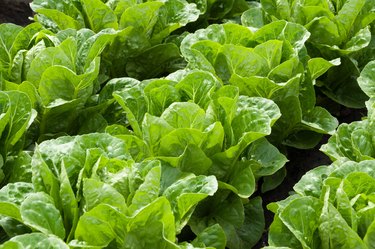
Nitrogen is one of the main nutrients all plants need to thrive, and a deficiency of this macronutrient causes mature foliage to turn yellow and young plants to fail to develop a deep green color. But while all plants require nitrogen, some really crave it and need more than other plants. Many plants respond well to lots of nitrogen, including lettuce (Lactuca sativa) and other leafy greens, rhubarb (Rheum rhabarbarum), Brussels sprouts (Brassica oleracea var. gemmifera), and ornamental leafy vegetables.
1. Lettuce and Leafy Greens
Video of the Day
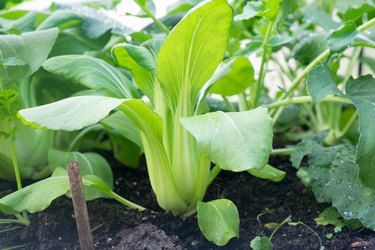
As a cool-season crop, lettuce grows best in cooler temperatures. In heat, it can turn bitter and bolt, which means it grows a seed stalk. It also needs plenty of nitrogen to form the dark green leaves you want to see in your salad bowl. Other leafy greens, including kale (Brassica oleracea var. sabellica), bok choy (Brassica rapa subsp. chinensis), and spinach (Spinacia oleracea), also benefit from lots of nitrogen.
Video of the Day
Even if you prepare an organically rich site for your heads of lettuce to grow, they require an additional dose of nitrogen in the form of calcium or ammonium nitrate while they're developing. Lettuce takes calcium nitrate at the rate of 2 pounds per 100 feet of bed and 1 pound of ammonium nitrate for the same area. If you have sandy soil, which doesn't hold onto nutrients, even more applications of nitrogen are necessary for healthy leaf development.
2. Rhubarb Plants
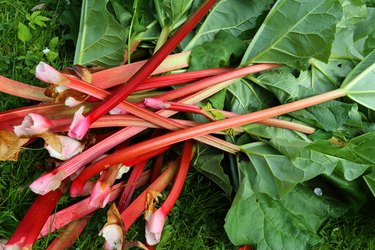
If you've never seen a rhubarb plant, imagine a red stalk of celery with 2-foot-long leaves and you'll have an accurate image. Even though rhubarb is a vegetable, it's generally used as if it were a fruit, as a pie filling and as a base for jams with added sugar or sweet fruits to make it taste more dessert-like. Rhubarb is another nitrogen-loving plant. Even if you enrich your soil with manure, which has a high content of this macronutrient, an additional nitrogen application midseason helps ensure a healthy crop.
3. Brussels Sprouts Plants
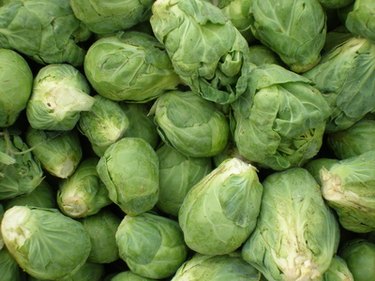
Looking just like small cabbages, but sometimes tasting bitter, Brussels sprouts require rich ground, moisture, sun during the day, and light frosts at night to develop their best flavor. In addition to amending the soil with organic matter, you also have to add a large dose of nitrogen early in the growing season to promote strong development.
Start with an application of 21-0-0 fertilizer four weeks after you transplant the Brussels sprouts, applying 1/2 cup for every 10 feet of plants. Repeat this application at eight weeks after transplanting them. When you apply the fertilizer, put it about 6 inches away from the plants as the nitrogen can burn the foliage.
4. Ornamental Leafy Vegetables
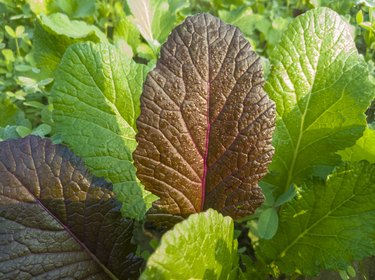
Varieties of kale and mustard greens (Brassica juncea), as well as cabbage, which you grow for their decorative effect on the cool-season landscape, require a high content of nitrogen in the soil. Feeding them a water-soluble fertilizer regularly that offers more than 70 percent nitrogen in the form of nitrate can help them grow well.